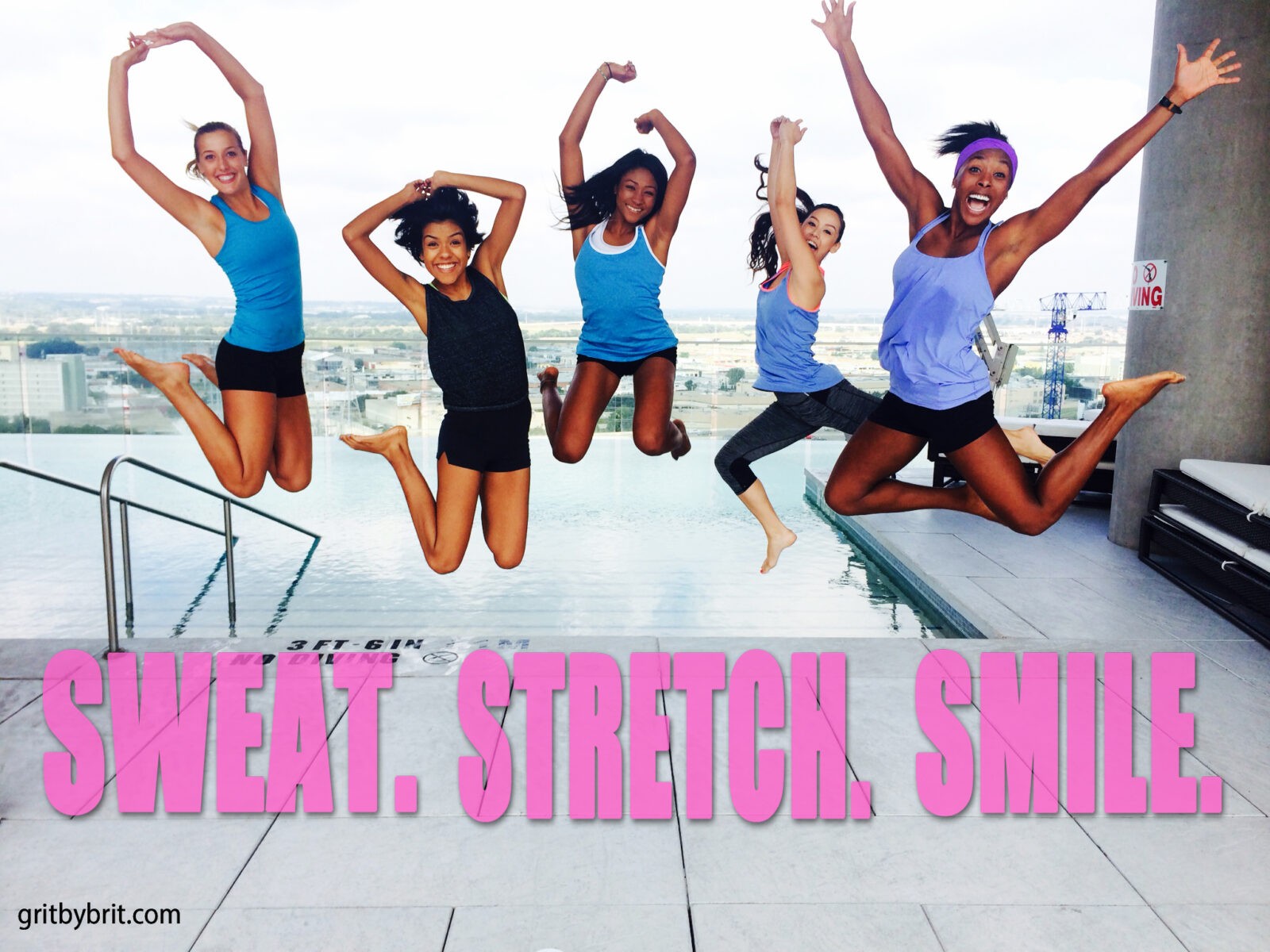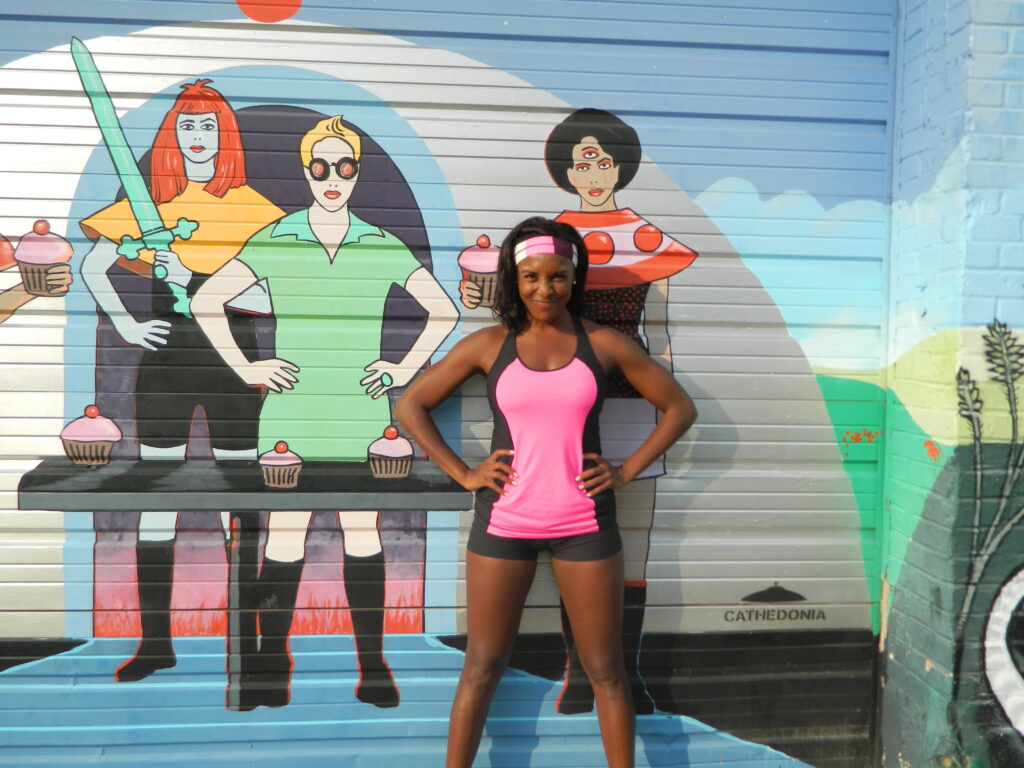Image: Me and 4 of of my favorite students after one of my Summer PiYo classes!
Hello friends! Hope your day is going well. As I sit at my desk, hunched over my lap tap, the striking pain in my back inspired me to write a well-needed blog post about STRETCHING! Back when I was getting my group fitness instructor certification with AFAA (Aerobics and Fitness Association of America) our course leaders constantly stressed the fact that there are 3, equally important, elements of physical fitness:
- Muscular Strength – “Your muscle’s ability to generate force against physical objects. In the fitness world, this typically refers to how much weight you can lift” – About Health
- Cardiovascular Endurance – “The ability of the heart to deliver oxygen to the working muscles, and the muscles ability to use that oxygen.” – Healthline
- Flexibility – “The ability of your joints to move through a full range of motion. Having flexibility in your muscles allows for more movement around the joints.” – About Health
If you’re like me, you often focus on the first 2 and neglect the 3rd – skip the stretching. I have a severe “Exercise ADD” (attention deficit disorder). I can hardly make it through a traditional yoga class without totally zoning out and I never stretch on my own, which is really bad. HOWEVER, I can get down with more dynamic stretching (i.e. stretching with movement, like Vinyasa flow yoga and PiYo) because I find it more engaging and even break a sweat once in a while.
Flexibility is SO important not only for out fitness, but for out overall well-being. Being flexible reduces risk of injury, improves posture (which makes you look slimmer), minimizes muscle aches and decreases stress through relaxation. That said, I wanted to share my 5 favorite stretches that are both effective and engaging. Try doing each of these exercises for 2 minutes at least 3 days per week. Move through each movement dynamically, keeping your body in constant motion instead of a holding the pose and straining. In doing so, your 10 minute stretch session will fly by! (Instructional photos from to stretchify.com)
Deep Kneeling Lunge (hips)
The hips are super strong – especially if you run often and do a lot of squats. Also Yogis believe that emotional tension is stored in our hips. This means that our hips are usually super tight, so we really need to focus on keeping them flexible. I recommend this deep lunging stretch to improve hip range of motion. Move forward and back slowly in this pose to keep it dynamic.
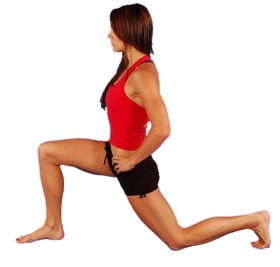
Standing Hamstring Stretch (back of leg/lower back)
The hamstring and lower back muscles are directly connected so if you have lower back pain, it’s likely that you also have really tight hamstrings. This stretch is pretty simple so shift your hips back far enough that you feel a nice stretch in the back of your leg and even a little in your booty.

Doorway Stretch (chest)
If you’re like me you sit at a desk all day (with horrible posture) hunched over a computer. This means that your chest is always contracting and you back is always expanded. Chest opening stretches help reverse that bad, hunch-back posture. To compete this stretch just a find a doorway, put your arm up and lean forward feeling a good stretch in your chest and little bit in the front of your shoulder.
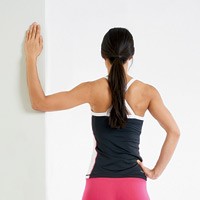
Cat Stretch (back)
I don’t know why, but my back is always sore. I think when I get stressed I hold a lot of tension in my back. Fortunately, I find a lot of relief by kneeling on all fours and doing cat/cow stretches. To do this stretch, alternate cat pose (shown below, rounding your back) with “cow pose” in which you push your chest and tail bone up (arch your back).
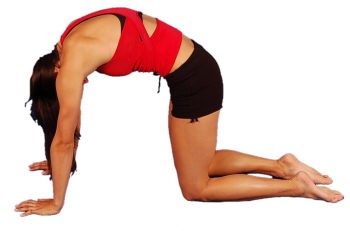
Head Tilt (neck)
So, I have a bad habit of hunching my shoulders up to my ears when I’m tired. This feels good at the moment, but then I get terrible neck pain. Simply tilting my head from side to side or downward towards my chest helps relieve tension. For a little extra sensation, I use my hands to add some pressure.

How often do you stretch? What are your favorite stretches and why?

